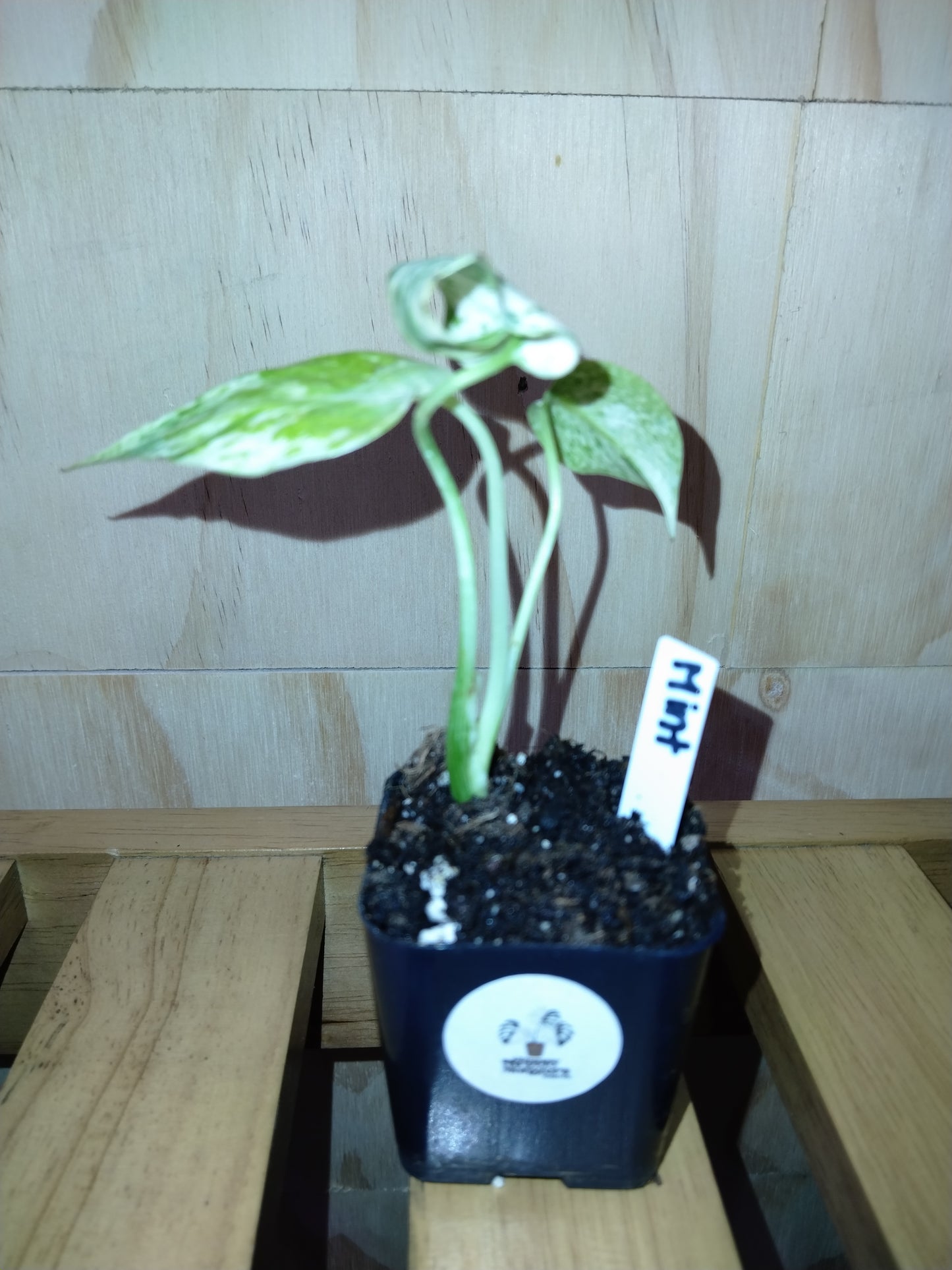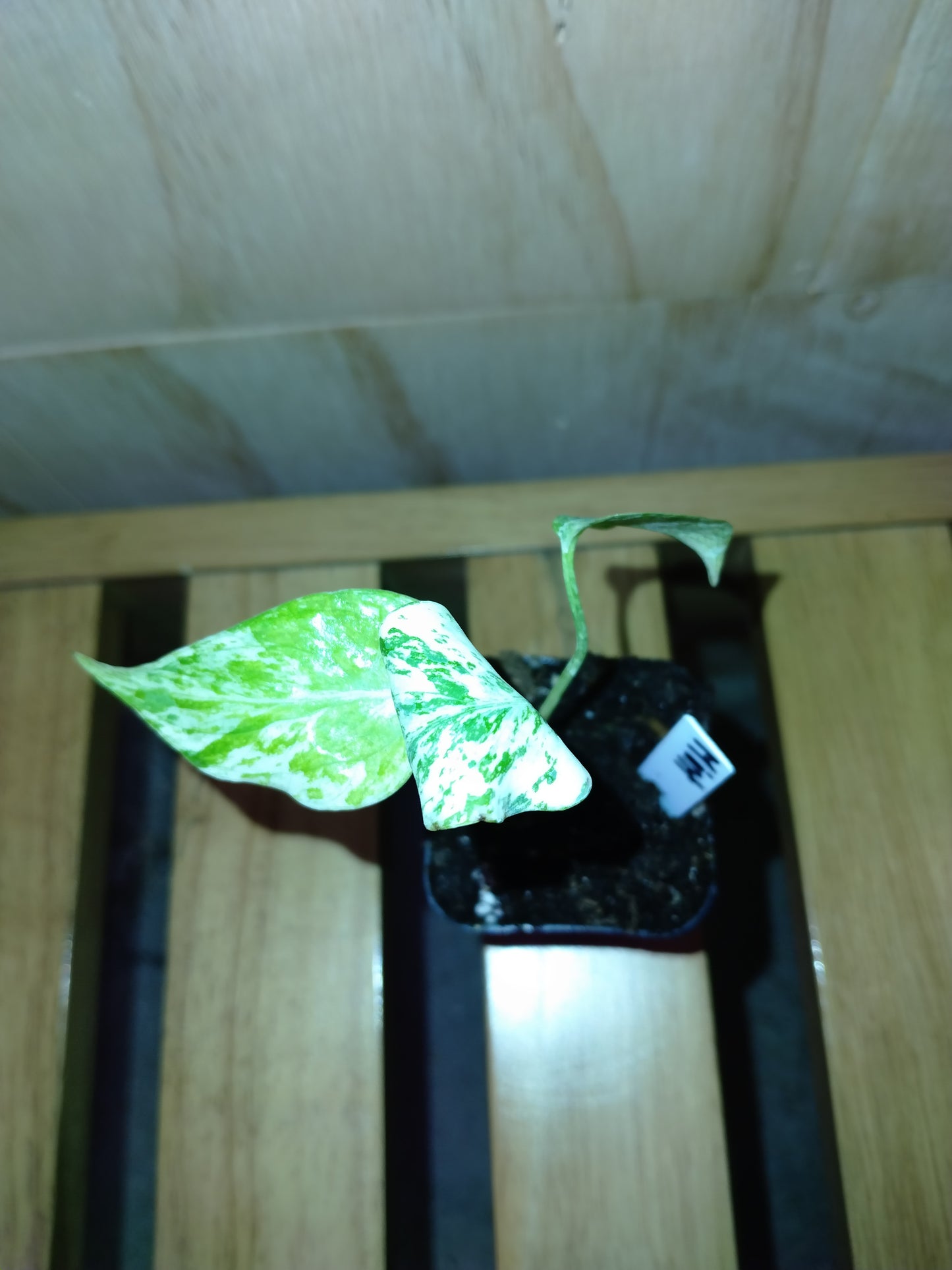The Happy Monstera Plant Co
Monstera Mint
Monstera Mint
Couldn't load pickup availability
🌱 What Is Monstera ‘Mint’?
-
Monstera ‘Mint’ is a rare variegated cultivar (or possibly variant) of Monstera deliciosa.
-
It features mint-green and creamy-white variegation mixed with the classic dark green leaf parts. The variegation is often described as marbled or splashed, giving each leaf a unique pattern.
-
As it matures, the plant develops fenestrations (natural splits/holes in the leaves) like regular Monstera deliciosa.
☀️ Light & Environment
-
Light: Bright, indirect light is key. Enough light preserves variegation; too little causes the plant to revert to more green (less variegation). Direct sunlight can burn the light/mint/white sections.
-
Humidity & Temperature: Prefers warm, humid conditions — ideally around 60-80% humidity. Temperatures ~65-85°F (18-29°C) are ideal. Avoid drafts or exposing to temps below ~60°F if possible.
💧 Watering & Soil
-
Use soil that's well-draining and airy (a mix with orchid bark, perlite, or coarse media) so roots get oxygen and water doesn’t sit.
-
Water when the top 1-2 inches of soil feel dry. Keep soil evenly moist but avoid waterlogged conditions. Overwatering can lead to root rot, especially because variegated parts of the leaf have less chlorophyll and can be more sensitive.
🌿 Growth Habit & Support
-
It’s a climber. To get large, mature leaves with dramatic fenestration, you’ll want to give it a moss pole, trellis, or something to climb. Aerial roots will use the support.
-
Growth is slower than plain green Monstera deliciosa because variegated parts have less chlorophyll (so less photosynthesis). That makes every new leaf more precious.
⚠️ Common Challenges & Things to Watch For
| Issue | What causes it | How to avoid or fix it |
|---|---|---|
| Loss of variegation / reversion to more green | Low light, stress, poor conditions | Increase light, ensure consistency in care, prune out totally green growth if needed. |
| Leaf burn on variegated sections | Direct sun, too strong light | Use filtered light; avoid direct midday sun. |
| Slow growth / small leaves | Variegation reduces chlorophyll; insufficient light or humidity | Provide optimal conditions, support for climbing, regular feeding in growing season. |
| Root rot / soggy soil issues | Poor drainage, overwatering | Use chunky soil mix, ensure pot has drainage, water only when needed. |
🌸 Care Tips & Best Practices
-
Rotate the plant occasionally so all sides get light → encourages even growth and pattern.
-
Feed during active growth (spring & summer) with a balanced fertilizer, but diluted, since variegated plants are more sensitive.
-
Consider propagation by stem cuttings with nodes; choose cuttings that include variegated portions if you want to maintain the trait.
Share



